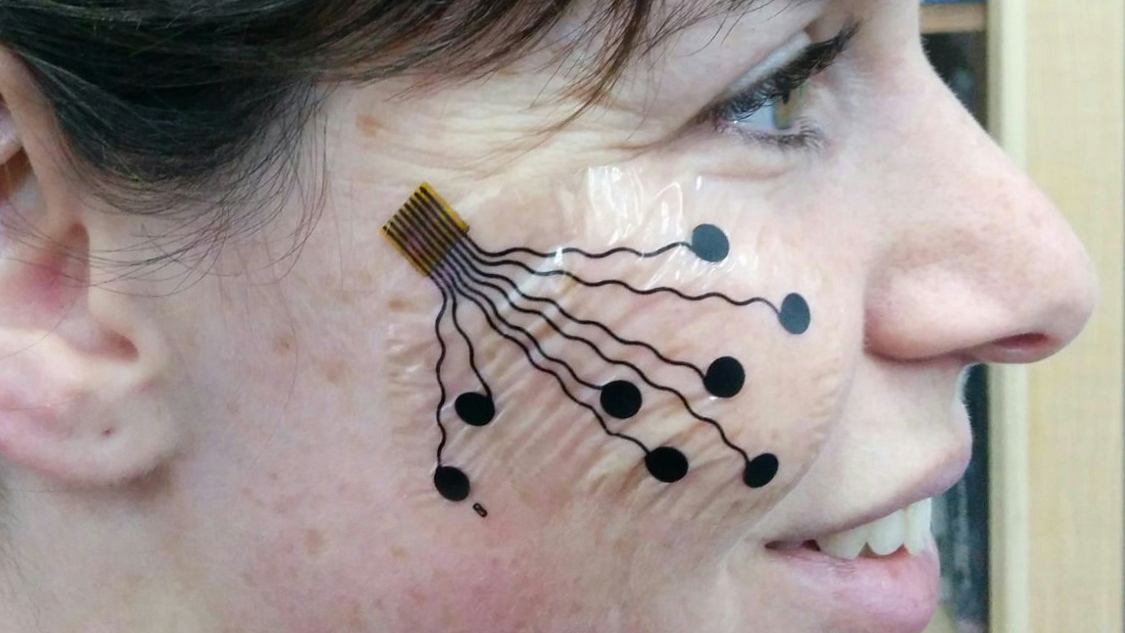This electronic tattoo can read your emotions
Is that a electrode on your face or are you just pleased to see me?

Nanotechnologists at Tel Aviv University have developed an electronic "tattoo" that monitors facial muscle movements, which they believe could have many applications in medicine, business and marketing.
The device consists of a carbon electrode, a sticky surface that attaches to the skin, and a polymer coating that uses nanotechnology to enhance the electrode's performance.
The data it gathers can be used to log emotions, by monitoring facial expressions through the electrical signals passing through the muscles of the face.
Early tests, the researchers say, show it can record a strong, steady signal for hours on end without irritating the skin.
Direct and Convenient
"Researchers worldwide are trying to develop methods for mapping emotions by analyzing facial expressions, mostly via photos and smart software," said Yael Hanein, who developed the device and authored a paper describing it. "But our skin electrode provides a more direct and convenient solution."
He says that anyone who wants to monitor people's emotions would find it a useful tool - from advertising and polling to health and medicine. To begin with, it'll be used to monitor the muscle activity of patients with neurodegenerative diseases at Tel Aviv Medical Center.
"Our tattoo permits patients to carry on with their daily routines, while the electrode monitors their muscle and nerve activity," said Hanein. "The idea is: stick it on and forget about it."
Get daily insight, inspiration and deals in your inbox
Sign up for breaking news, reviews, opinion, top tech deals, and more.
"But that's not all," he added. "The physiological data measured in specific muscles may be used in the future to indicate the alertness of drivers on the road; patients in rehabilitation following stroke or brain injury may utilize the 'tattoo' to improve muscle control; and amputees may employ it to move artificial limbs with remaining muscles."
- Duncan Geere is TechRadar's science writer. Every day he finds the most interesting science news and explains why you should care. You can read more of his stories here, and you can find him on Twitter under the handle @duncangeere.
